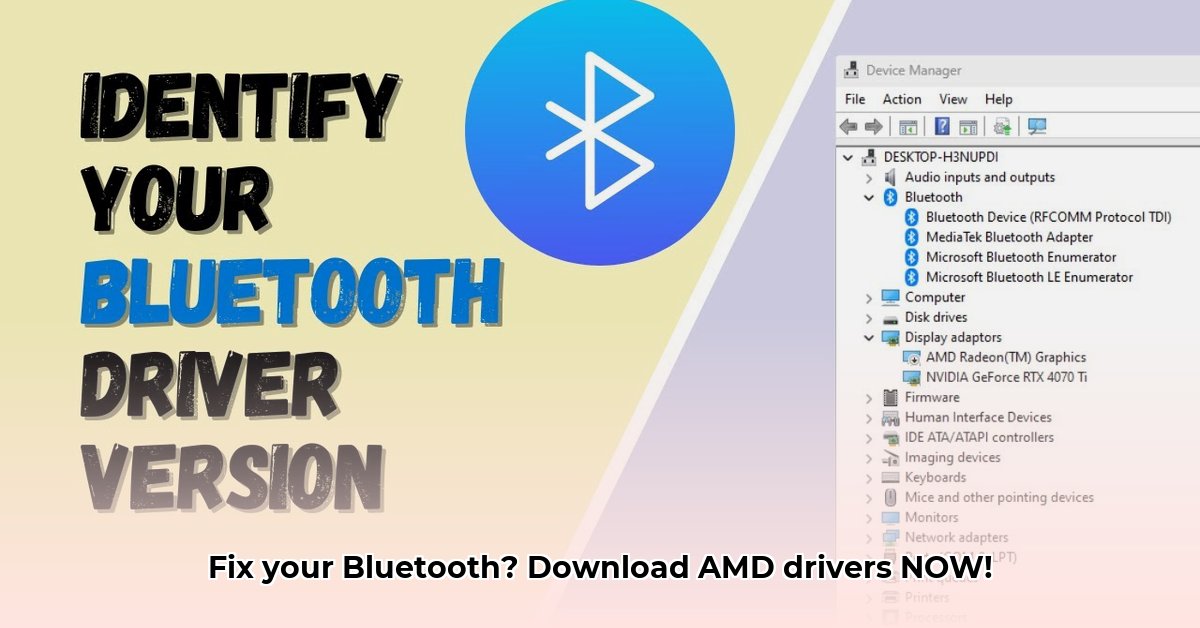
Finding the right Bluetooth drivers for your AMD system running Windows 11 can be frustrating. This guide provides a step-by-step solution, explaining the process clearly for both integrated and add-on Bluetooth adapters.
Understanding Your AMD System's Bluetooth Setup
Before diving into driver installation, it's crucial to understand your system's Bluetooth configuration. This determines where to find the correct drivers.
Integrated Bluetooth: Many AMD motherboards incorporate Bluetooth directly into the chipset. Drivers are usually bundled with the main motherboard chipset drivers.
Add-on Bluetooth Adapter: If your motherboard lacks integrated Bluetooth, you likely have a separate adapter (USB dongle or PCIe card) requiring its own drivers.
Identifying your setup is the first step to a smooth installation.
Step-by-Step Driver Installation Guide
Follow these numbered steps to install your Bluetooth drivers:
Identify Your Hardware: Note your motherboard model number and, if applicable, your Bluetooth adapter's model number. This information is usually found on a sticker on the device or in the accompanying documentation.
Visit the Correct Website: While AMD provides many drivers, Bluetooth drivers are typically handled by either your motherboard manufacturer (ASUS, Gigabyte, MSI, etc.) or the Bluetooth adapter manufacturer. Go to the relevant support website.
Use the Auto-Detect Tool (If Available): Many manufacturers offer an auto-detect tool to simplify the process. If it works, great! If not proceed to the manual search.
Manual Driver Search: Use the model numbers from Step 1 to locate the appropriate drivers for Windows 11 on the manufacturer's website. Precise model numbers are crucial to ensure compatibility.
Download and Install: Download the driver package and run the installer, following on-screen instructions.
Verify Installation (Device Manager): After installation, open Device Manager (search for it in the Windows search bar) and check under "Bluetooth." Your adapter should be listed and functioning correctly.
Alternative Solutions and Troubleshooting
If the above steps fail, consider these alternatives:
Motherboard Manufacturer's Website: Check the manufacturer's website again; sometimes drivers are categorized in different ways.
Community Forums (Use with Caution): Online forums offer potential solutions, but download files only from trusted sources to avoid malware.
Troubleshooting Common Issues:
- Driver Incompatibility: Ensure you downloaded the correct driver for your OS and hardware.
- Missing Files: Re-download the driver package to ensure completeness.
- Persistent Issues: Restart your computer, or check for updated drivers. Contact the manufacturer if problems persist.
Preventing Future Driver Headaches
To avoid future issues, consider these preventive measures:
- Check Motherboard Specifications: Before purchasing a system, verify its Bluetooth capabilities. Integrated Bluetooth simplifies driver installation.
- Choose Pre-built Systems: Pre-built PCs often handle driver installations automatically, minimizing the risk of manual driver issues.
This guide provides a comprehensive approach to resolving Bluetooth driver installation problems on AMD systems running Windows 11. Careful attention to detail and patience will ensure smooth Bluetooth functionality. Remember to always prioritize official drivers from the manufacturer's website to avoid potential issues.
Key Takeaways:
- AMD CPUs don't directly manage Bluetooth; your motherboard or a separate adapter does.
- Accurate hardware identification is critical for finding correct drivers.
- Prioritize official manufacturer websites for driver downloads to maintain system stability and security.
⭐⭐⭐⭐☆ (4.8)
Download via Link 1
Download via Link 2
Last updated: Sunday, April 27, 2025